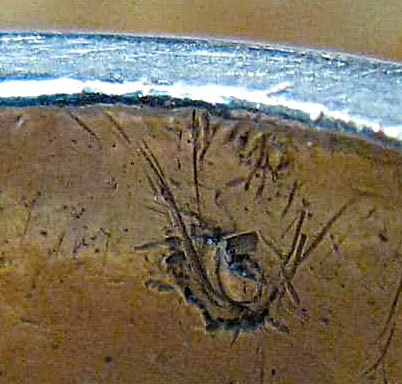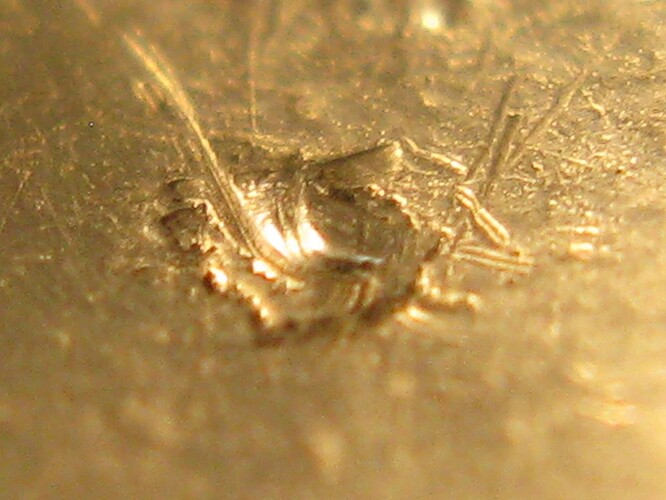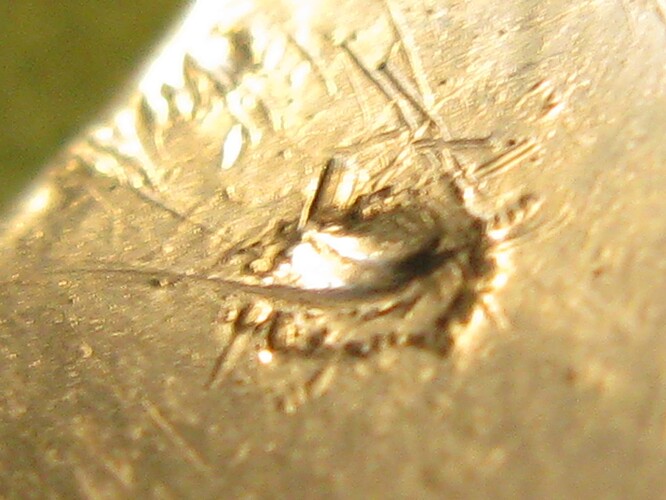What are you asking?
Ring blanks for chip inlay have been available for many years.
They are still available to purchase.
At one time, the chips of choice were Sleeping Beauty, Kingman and natural Red Coral.
I’m not selling it. I came across it in a box of stuff I had forgotten and started looking into the history of the chip inlay style. I was surprised to find it started within just a few years of when I got the ring. Since there are no markings on it I wanted to learn more about it.
I don’t even know if it’s silver or some other alloy. If they were making ring blanks back in the late 60’s early 70’s then that could be it. The ring casting is a little crude. Irregular inlay boundaries, a parting line at one end, some shrinkage on the inside, and a blob of metal it looks like someone tried to chip off (see photos).
I’d like to think someone melted down some coins to make it, but for all I know it’s nickel or something else.
Thanks for the information.
I meant what your questions about it were.
Yes, some of the castings back then were a little crude. This style of ring was often made to be inexpensive for the tourist trade.
Can you do a test for silver? An easy way is to rub your thumb on something you know is silver. Then smell your thumb. Wash hands. Then rub the ring. If it smells the same, there is a good chance it is silver.
Alloys and nickel smell different.
I did the rub and smell test and it reads as silver. I think this works from acids in the skin reacting with the silver to create a characteristic smell. I also did a drop of bleach and it turned it black fairly quickly.
So what I know is it’s from the early days, before 1972, it’s unmarked and the casting is a little crude (see the several imperfections in the photos). I can’t quite swear to it but am pretty sure it’s silver. So what is known about what and how the inlay jewelry was made back then? Is there a reference or perhaps an earlier thread someone can point me to?
Thanks for all replies so far.
The ring has wear and bump marks typical of sterling. Cast sterling ring and bracelet blanks (could use cut stones or chip inlay) such as these were available from suppliers such as Indian Jewelers Supply.
Here is a great thread. Talking about chip inlay: If you’re thinking of buying a piece
You can find more threads on this site about chip inlay if you put it in the site’s search bar, but this is the most thorough one I have read on here.
There is a limit to how old your ring could be; chip inlay was first invented in the '60s by Tommy Singer.
Thanks. I know the ring dates to around 1972 or prior simply because I’ve had it since then. Were those suppliers around at that time?
Yes, a great thread. Thanks. I am a little familiar with the history of Tommy Singer’s invention of the style from around the mid-1960’s. So of course the ring is no older than that. But it is certainly from within the first five to seven years of the style. Even if it is a low-cost mass-produced piece, I think it is special just on account of dating from the earliest years. Of course, my opinion on the age is just my say-so, so it’s pretty much a personal thing.
IJS was around from 1943 to 1993.
Not assignable to Tommy Singer, his work was delicate in effect rather than massive (talking about the inlay work), and not particularly geometrical. I agree with @fernwood’s summary.
Having seen Singer’s work I can only agree. This ring is clearly not of the same caliber or style. But considering its age, it tells me the chip inlay became popular fairly quickly if they were making these for low tier pricing so soon.
Chip inlay wasn’t high end to start with. It was and is a salvage approach for fragments too small to be made into cabs or otherwise usable. It was popular because it was generally cheaper to make and sell. It’s not to be confused with advanced lapidary work.
Could this be a worn makers mark?

I looked at that also. IMHO its a casting imperfection.
It kind of looks like a horse shoe to me. I thought it was an imperfection, too, then enlarged.
I’m pretty certain it is a casting imperfection. It’s hard to capture well in a photo but it is a little blob of metal that stands above the surface with part of the perimeter sunken in and rough. There are scratch marks around it that look as if someone thought it was an inclusion and tried to pick it out.
This is where the sprue was attached when the blank was cast. Looks like someone tried to “fix” the telltale attachment point by digging at it with a sharp object (like a graver).
Interesting! I would have thought the sprue would have been around an edge or perimeter.
Depends on the piece. The sprue is usually placed where the largest volume of wax is most needed, as the thinner areas will fill up first, and the larger areas last. You usually won’t find any evidence of it on higher quality cast pieces as any small voids have been back filled, and the telltale remnants ground away and blended. This particular piece was molded from a hand fabricated master, and the sprue placed in back of, and nearest the channels on the top of the ring to fill them up first. as these would be the areas least likely to fill completely if the sprue was placed away from those areas in a thinner portion of the master.
This is good info, thank you! Stuff like this doesn’t come up when you read about casting in books.

